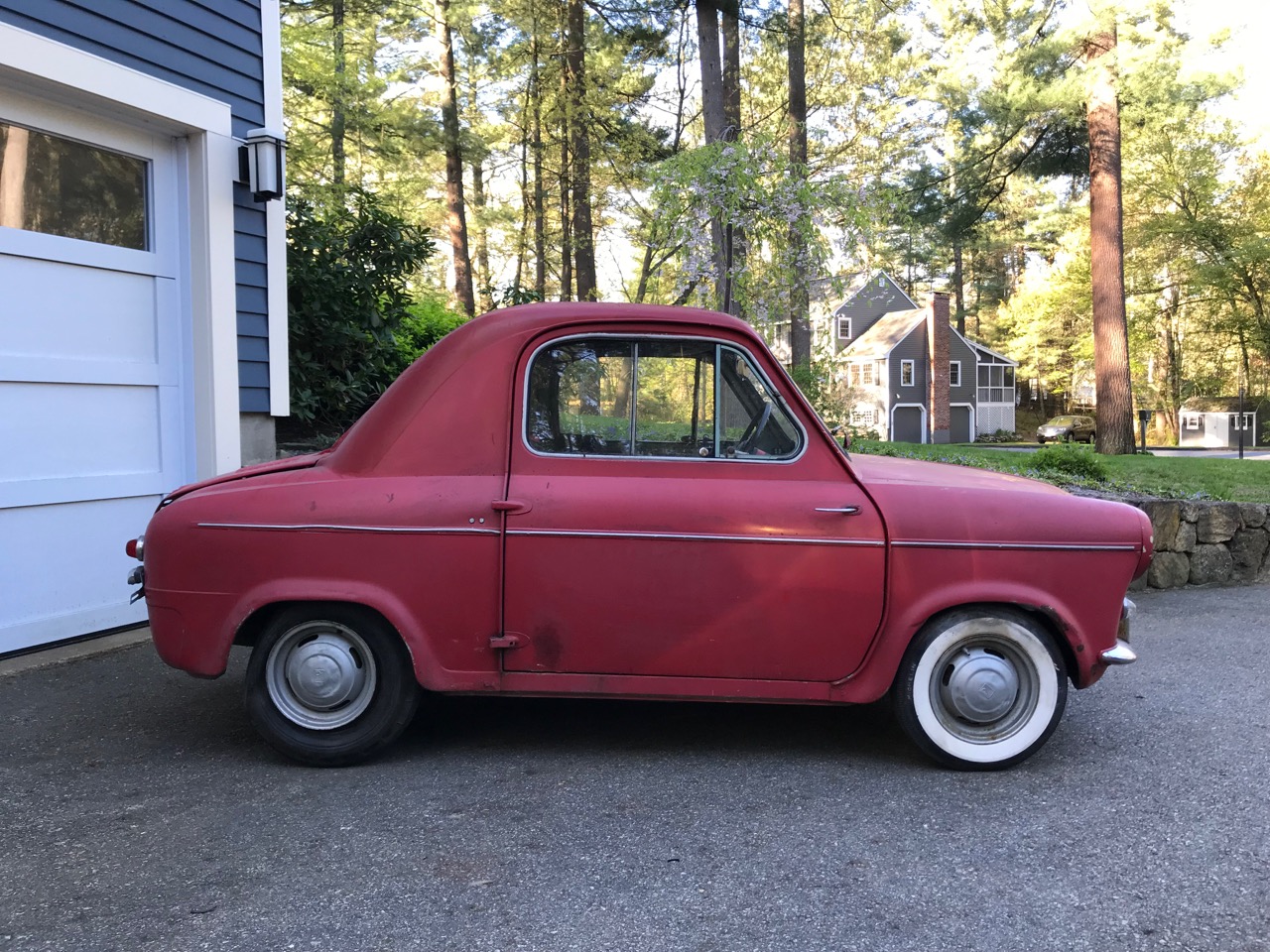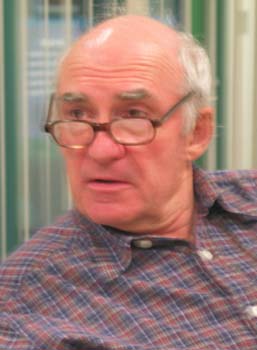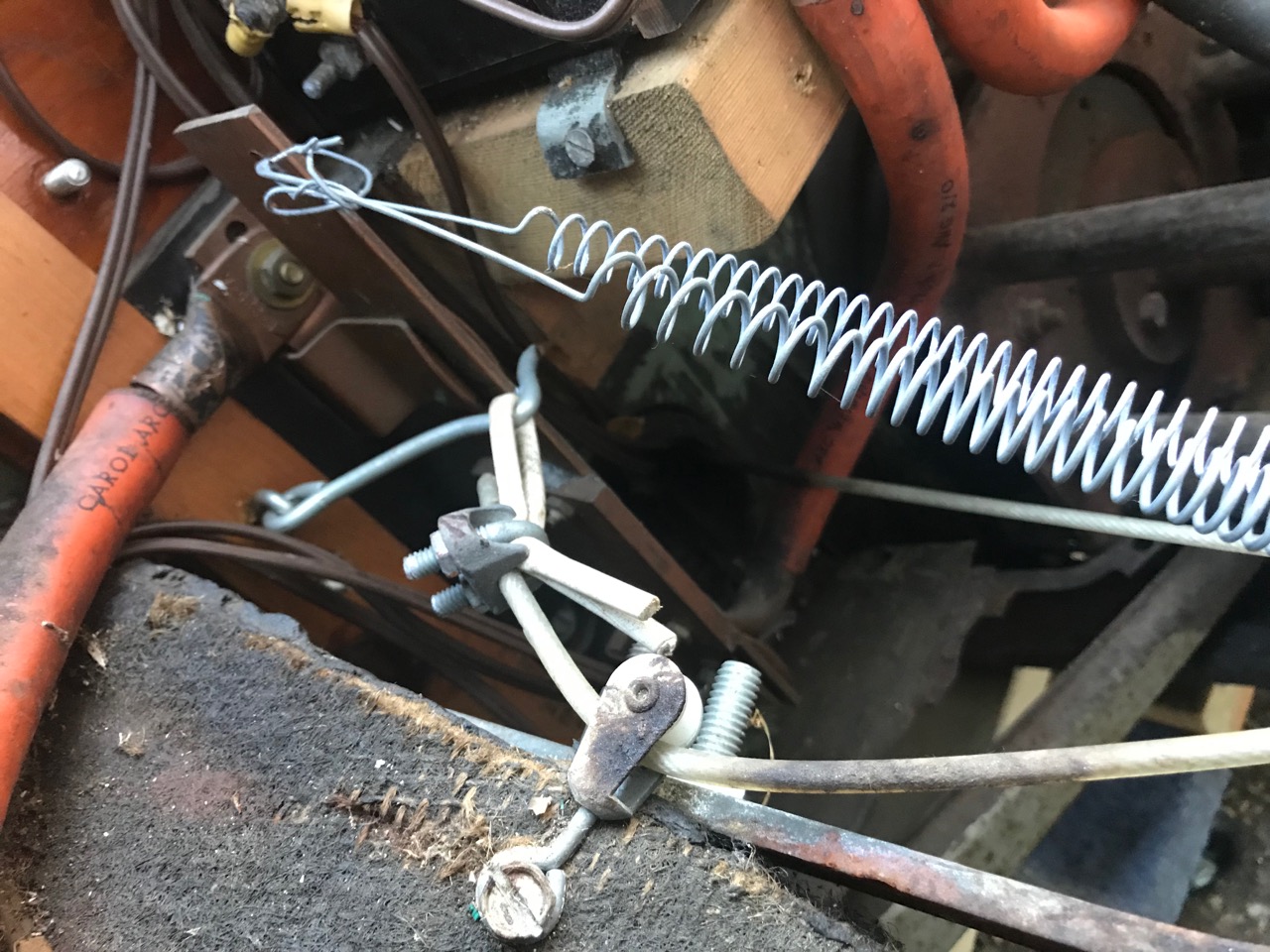This time-traveler came from Arthur Brooks at Blue Collar Vintage Salvage (facebook and Instagram) and he's as awesome as they come. He had the car because he's acquainted with the family of the man who converted it to electric in 1973. It was last running in 1976... and sat until this spring (2019).

Unloaded.
The man who did the conversion is Stanley Tanenholtz, and he is quite a guy. Korean War vet, physics and math professor, and a whole lot else. (2012 profile from the Westborough Community Advocate here, and in Part VIII he comes to visit to see his old car.)

Professor Stanley Tanenholtz.
Practically speaking, there were no power transistors in 1973. (MOSFETs were just being developed, and they were expensive and rare.) Prof Tanenholtz instead used six Cold-War-tough Westinghouse relays to provide four different voltages to the surplus forklift motor. It's a 48V system; EIGHT 6V golf car batteries sit in two tiers behind the front seats. It's a lot of weight... more than 500 lbs. It's a testament to the Piaggio engineers and the builders at ACMA that this thing rolled nonetheless!

Westinghouse relays all over the place.
Historical note: Vespa never built nor sold the Vespa 400 microcar in Italy. The story goes that, as Vespa started working on a car to add to its wildly successful line of scooters, Fiat told them that if they went ahead, that they (Fiat) would get in to the scooter business and swamp them. So... ACMA built the 400 in France, for the French market. Some were built for export to the US, and that's how this one came to be here... through Vespa of Boston. Wikipedia: Vespa 400.

Emergency power cut-off.
One of the coolest features is the DIY emergency power-kill system, by which the driver can pull a cable, which pops a screen-door latch off of a 1-1/2" copper-bar knife-switch conductor out of its slot to cut the current from the batteries.
Next up, Part II - Seeing what's there